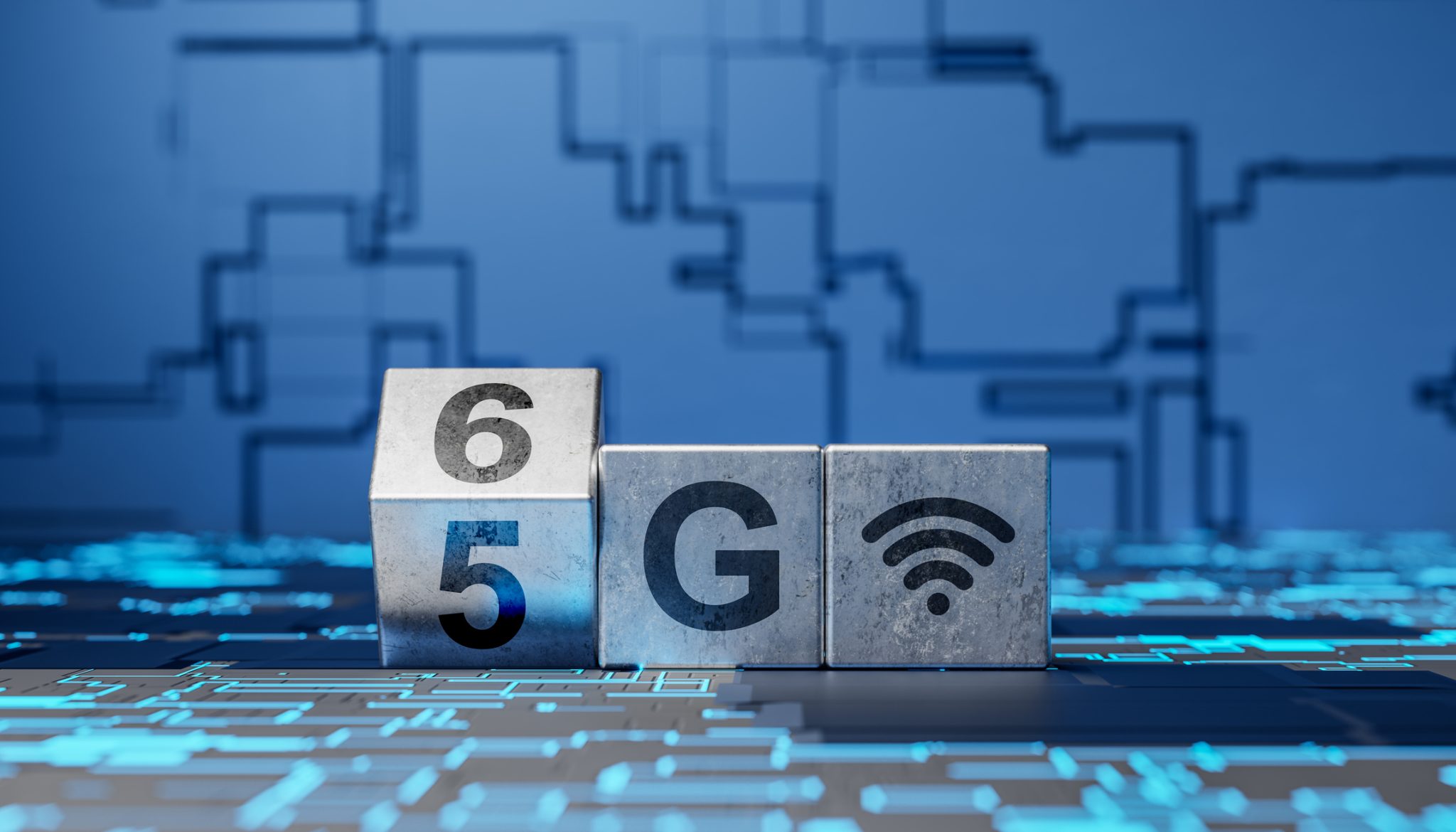We’ve all heard the promises: 5G is here to revolutionize connectivity. But ask anyone who’s tried hosting a remote meeting in a dense urban area or relying on real-time data in a logistics hub and they’ll tell you, the revolution feels incomplete.
This isn’t a knock on 5G. It’s a reminder that technology is constantly evolving, and in many ways, 5G is merely the launchpad for something far more transformative: 6G technology.
Our team at thirtyone3technology helps forward-looking organizations see around corners. And today, the next corner is labeled “6G.”
As the world prepares for a new wave of connectivity, with terahertz speeds, machine-learned networks, and near-zero latency, the smartest companies aren’t asking if they should prepare.
They’re asking how soon can we start?
In this insight, we will break down:
- What 6G technology is (without the hype),
- Why your business needs to care now (not in 2030),
- Where to invest to ensure your IT infrastructure planning aligns with future demand,
- And how thirtyone3technology can guide your strategy from uncertainty to readiness.
If you think we’re connected now… you haven’t seen anything yet.
- 1. What is 6G? The Next Leap Beyond 5G
- 2. Why 6G Matters for Businesses
- 3. Timeline: When Will 6G Arrive?
- 4. Key Areas Businesses Should Invest in Today
- 5. Preparing for 6G: thirtyone3's Approach
- 6. How thirtyone3 technology Helps You Lead the Transition
- 7. Final Thoughts: Ready for 6G Breakneck Speed?
- 8. Need Help Getting Started?
- 9. Further Reading
- 10. Related Articles
What is 6G? The Next Leap Beyond 5G
The shift from 4G to 5G brought us speed, but the leap to 6G technology promises something much deeper: intelligent, adaptive connectivity that supports not just devices, but the real-time decisions that power them.
Defining 6G in Simple Terms
6G refers to the upcoming sixth generation of wireless communication, expected to deliver mind-bending data rates of up to 1 terabit per second (1 tbps) and latency as low as 0.1 milliseconds. But more than just speed, 6G is being designed as a resilient, AI-native network, one that can sense, learn, and adapt in real time; a dramatic evolution from the architecture of 5G.
According to IEEE Spectrum, 6G will depend on adaptive resiliency, embedding AI and machine learning directly into the core of the network. This will enable new capabilities like:
- Holographic communication that adjusts based on device type and bandwidth.
- Sensing-as-a-service, allowing the network to monitor and respond to environmental data.
- Fully autonomous systems with real-time decision-making across logistics, energy, and urban management.
5G vs. 6G: A Comparative Snapshot
| Feature | 5G | 6G (Projected) |
| Peak Speed | Up to 10 Gbps | Up to 1 Tbps |
| Latency | ~1 millisecond | ~0.1 milliseconds |
| Frequency | Up to mmWave | Sub-THz to THz |
| Network Intelligence | Centralized AI integration | Native, distributed AI |
| Use Cases | Mobile broadband, IoT | Digital twins, holography, AI automation |
6G isn’t just the next rung on the ladder; it’s a reimagination of what networks are capable of. Businesses that understand this won’t just benefit from faster connectivity; they’ll unlock entirely new models of engagement, automation, and service delivery.

Why 6G Matters for Businesses
Most organizations are still ironing out their 5G strategies, yet early movers are already eyeing 6G technology as a critical enabler of future connectivity. Why? Because 6G won’t just improve your operations, it may reinvent them.
Competitive Advantage Starts Now
The early adoption of transformative technologies has always been a key differentiator. In a world moving toward instantaneous, intelligent, and immersive digital experiences, companies that lay the groundwork today will dominate tomorrow’s landscape.
Industries, governments, and academia are already collaborating to define the building blocks of 6G, laying the groundwork for global interoperability standards, new regulatory frameworks, and early-stage use case development. Businesses that engage in these strategic conversations now will shape the connectivity ecosystem others will have to adapt to later.
From Insight to Opportunity
Imagine a logistics company that doesn’t just track trucks in real time but adjusts routes automatically based on traffic, weather, and delivery urgency. Or a healthcare system that uses holographic diagnostics to deliver specialist care across borders. These aren’t futuristic dreams, they’re use cases being explored as part of the 6G rollout.
The healthcare industry is already grappling with data overload, clinician burnout, and system inefficiencies. These are exactly the kinds of challenges that can be addressed through real-time analytics, AI-driven patient support, and fully interoperable care platforms – all of which align with emerging healthcare technology trends shaping the next decade.
This applies far beyond healthcare. Every industry reliant on real-time data, from retail and finance to manufacturing and defense, stands to benefit from the next generation of ultra-responsive infrastructure.
The Risk of Waiting
Technology doesn’t wait for laggards. Businesses that treat 6G planning as a “later” conversation may find themselves facing competitors with fully automated systems, real-time decision networks, and faster go-to-market timelines.
To stay competitive, companies must begin rethinking their IT infrastructure planning today, even if commercial 6G isn’t expected until the 2030s. That means modernizing cloud capabilities, investing in edge computing, and reevaluating cybersecurity models for ultra-high bandwidth systems.

Timeline: When Will 6G Arrive?
Key Milestones to Watch
The roadmap to 6G is already unfolding through public-private partnerships, global consortiums, and pre-standardization initiatives. Here’s what we know so far:
- 2025–2027: Early Prototypes and Testing
Research institutions and tech leaders are expected to conduct real-world trials of 6G capabilities, particularly in controlled environments like university labs, testbeds, and smart city pilots. - 2028–2029: Standards and Pre-Commercial Pilots
Global standards bodies like the ITU and 3GPP are projected to finalize technical specifications, paving the way for initial pre-commercial deployments. - 2030: Commercial 6G Rollout Begins
Full-scale, global commercialization of 6G is likely to begin around 2030, with telecommunications providers launching infrastructure upgrades and device manufacturers racing to meet compatibility requirements.
What Businesses Should Be Doing Right Now
Although 6G won’t be mainstream for several years, waiting to plan until 2030 is a strategic mistake. Smart organizations are already aligning their IT infrastructure planning with what 6G will demand:
- Modernizing data pipelines to support terabit-scale throughput
- Deploying edge computing frameworks for latency-sensitive tasks
- Preparing for network-level AI integration that responds dynamically to demand
- Engaging with standardization efforts through industry groups or consortiums
In many ways, preparing for 6G isn’t about chasing the technology; it’s about future-proofing your systems so that when it arrives, you’re already positioned to move at full speed.
Key Areas Businesses Should Invest in Today
Positioning for 6G technology means more than upgrading a network router or switching to fiber. It’s about preparing your entire digital infrastructure to support the demands of a hyper-connected, AI-native future. For most businesses, this means strategic IT infrastructure planning must start now, long before the first 6G tower goes live.
Here are four key areas to prioritize:
Infrastructure Readiness
Before a business can leverage 6G speeds and low-latency responsiveness, it must address the fundamentals (bandwidth, cloud capabilities, and data architecture). Companies should be evaluating:
- Migration paths to high-capacity, low-latency fiber
- Scalable cloud environments with edge support
- Upgrades to wireless hardware and endpoint compatibility
Talent & Skill Development
6G will introduce new requirements for AI operations, real-time data orchestration, and cybersecurity. Upskilling internal teams and hiring forward-thinking technologists will be critical, particularly in:
- AI and machine learning engineering
- Network automation and edge orchestration
- Cyber-resiliency in distributed architectures
Security Frameworks
Innovation Road Mapping
Preparing for 6G: thirtyone3's Approach
At this stage, many businesses aren’t sure where to start, and that’s exactly where thirtyone3technology steps in. Consider this scenario that illustrates how we would approach future-focused infrastructure planning:
Imagine a regional healthcare network struggling with bandwidth limitations that affect telehealth performance and diagnostic data transfers. In a situation like this, we would start by conducting a full assessment of their network environment, identifying current bottlenecks and future scalability gaps.
From there, we’d design an integrated cloud-edge framework with AI-assisted data routing to support more responsive, reliable service delivery.
This approach wouldn’t just solve the immediate issues, but it would also create a robust digital foundation ready to support real-time diagnostics, immersive patient care, and advanced automation as 6G technology becomes available.
This proactive strategy, grounded in both current needs and future connectivity, is how we help businesses evolve with confidence.

How thirtyone3 technology Helps You Lead the Transition
Navigating the leap to 6G technology is strategic foresight. At thirtyone3technology, we work with clients to turn uncertainty into action by aligning infrastructure decisions with long-term innovation goals.
Tailored Digital Transformation Strategies
Every organization has unique challenges, and that’s why we don’t believe in off-the-shelf solutions. Our team partners with stakeholders to assess operational needs, future growth targets, and market dynamics, then builds a transformation roadmap that’s both scalable and resilient.
Whether it’s preparing edge deployments for near-zero latency, optimizing cloud infrastructure for AI-assisted operations, or assessing regulatory impact for THz spectrum applications, our advisory approach ensures technology is never the bottleneck to growth.
Readiness Assessments & Innovation Roadmaps
We help clients:
- Evaluate their IT infrastructure readiness for 6G-scale demands
- Identify where AI and machine learning could drive performance
- Establish governance models that support adaptive innovation
- Develop pilot programs to test high value 6G use cases early
By combining technical expertise with strategic insight, we empower organizations to make confident decisions today, so they’re not racing to catch up tomorrow.
Preparing for the Unseen: Building Agility into Your Strategy
The pace of change is not just fast, it is unpredictable. In this kind of environment, success doesn’t come from having the most tools; it comes from knowing how to respond when things don’t go according to plan. The businesses that succeed are the ones that stay focused, make thoughtful decisions with limited information, and keep moving forward even when the next step isn’t clear.
At thirtyone3technology, we think about agility not just as a strategy, but as a mindset. It’s why we use the Working Genius model in our own team, to understand how each person contributes to problem-solving and momentum.
Whether it’s Wonder, Invention, Discernment, Galvanizing, Enablement, or Tenacity; knowing where our strengths are helps us move faster and with more intention.
We’ve found this model especially powerful in preparing for technologies like 6G. Because it’s not just about getting ready for what we know is coming. It’s about building the kind of team that’s equipped to handle what no one sees coming yet.

Final Thoughts: Ready for 6G Breakneck Speed?
6G technology may still be a few years from full deployment, but the time to prepare is now. From intelligent infrastructure and edge computing to adaptive strategy and organizational agility, the businesses that act today are the ones that will lead tomorrow.
Future connectivity isn’t just about being faster; it’s about being smarter, more responsive, and better equipped to deliver value in real time. And that requires a shift in how companies think about technology, investment, and transformation.
Our goal at thirtyone3technology is simple: help you get ahead of 6G and stay ahead of whatever comes after. Whether you’re planning your infrastructure, exploring emerging tech, or looking to align your team with a clear innovation strategy, we’re ready to guide you forward.
Contact us today to start building for what’s next and be ready for everything 6G makes possible.
Need Help Getting Started?
Further Reading
- IEEE Spectrum: 6G Will Need a New Kind of Resiliency
This article explores how 6G networks will require built-in adaptability and intelligence, emphasizing the need for system-level resiliency as networks become more complex and dynamic. - McKinsey & Company: Shaping the Future of 6G
A comprehensive look at how global stakeholders, from governments to industry, influence the early development and strategic direction of 6G technology. - John Lynch & Associates: The Future of Healthcare: Trends and Challenges Shaping 2025
Outlines key trends and challenges shaping healthcare, particularly around data, interoperability, and technology- areas where 6G could have a major impact.

